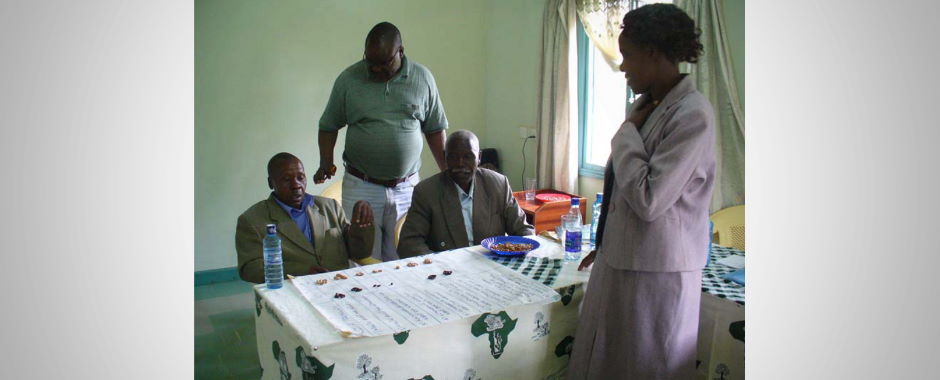Background
Multicriteria Mapping (MCM) is an interactive hybrid qualitative/quantitative appraisal method for exploring contrasting perspectives on complex strategic and policy issues. Based around an easily-used, freely-available web-based tool, it aims to help ‘open up’ technical assessment by ‘mapping’ practical implications of different options, knowledges, uncertainties contexts and values – as seen under contrasting points of view.
MCM was developed in a series of collaborations over the past fifteen years by Andy Stirling in SPRU at Sussex University, and an MCM software package and manual was launched in October 2014. It is based on earlier experience with use of many other multicriteria methods in various policy debates in Europe and North America over controversial issues like choosing between energy technologies, siting nuclear facilities, developing conservation strategies or assessing alternative chemicals.
Like other methods, MCM can yield a picture of what looks best overall. But this can conceal all kinds of contestible technical assumptions or value judgements. What’s different about MCM, is that it treats numbers as servants not masters. Paying as much attention to the qualitative reasons for the numbers, MCM reveals the practical implications of contending judgements, in a way that is quite accessible to participate in and relatively easy to understand.
What’s Involved?
An MCM exercise usually involves a series of one-to-one interviews with a diversity of carefully-recruited ‘experts’ or ‘stakeholders’. Sometimes it is undertaken in group meetings, but always in a way that highlights different voices. Special efforts are made to include all relevant perspectives and ensure that each is content that key features of their view are fully and correctly interpreted.
Each participant moves through a series of four stages. First, an array of alternative options are reviewed and added to if necessary. Second a set of criteria are defined, to address the issues that seem most relevant to the participant in judging how good or bad these options are. Third, the participant scores their options under their criteria, expressing a range of uncertainty between pessimistic and optimistic conditions – descriptions of which are carefully recorded. Finally, each participant weighs up the different criteria to express their relative importance.
The result is a rich body of information, represented both as diagrams and text, documenting the details of the different perspectives. The web-based tool also helps analysis, exploring in flexible ways how different groupings of options, criteria or perspectives differ and what they hold in common.
Broadening Out and Opening Up?
MCM aids the broadening out of academic research or policy appraisal in a number of ways. The accessible and flexible process allows is inclusive of a diversity of different perspectives. The responsiveness of the process avoids inherent bias towards particular kinds of criteria or option. People are free to define their appraisals as they wish and document the reasons why.
In the end, MCM allows account to be taken of an unconstrained array of perspectives, options, criteria, uncertainties, scenarios and value judgements. If people object to quantifying criteria or trading them off, this can also be expressed. This is in quite stark contrast to methods like risk assessment or cost benefit analysis – or with other kinds of multicriteria assessment – which are typically much more restrictive.
MCM also helps open-up wider debate about the issues it addresses. This is because the final results are not automatically averaged out to give a single picture of what looks best or worst overall. Instead, they take the form of ‘maps’ showing how the appraisal varies depending on how it is undertaken.
Roles, Fit and Limits?
MCM offers a good way to engage diverse actors and explore framings of alternative pathways. It is good at documenting, sensitively and quite quickly, a detailed body of material for a large number of different perspectives. With appropriate prompting in interviews or group discussion, it can also be used to discuss more historical and dynamic aspects and how different actors might respond. But this tends to be secondary and requires other methods to fully draw out.
The relatively structured and intensive style of MCM means it is more a ‘focusing’ method than one for ‘scoping’ out the nature of wider contexts or the kinds of perspectives that are most relevant. Other techniques should be used to address these aspects. But, if carried out across an appropriate diversity of options and perspectives, MCM does offer an excellent way to undertake ‘linking’ – by showing very concretely and in great detail how the answers depend on the questions.
It is a strength and a weakness of MCM that it is based around such an accessible web-based tool. If this encourages superficial use, involving quickly-collected numerical results, then it can be misleading. And some people are uncomfortable engaging directly with computers. So other methods are sometimes needed to help with this.
Key relevant references and weblinks
Find further documents and resources: www.multicriteriamapping.com
Other briefing materials can be found here: http://www.sussex.ac.uk/Users/prfh0/Pamphlets.pdf
